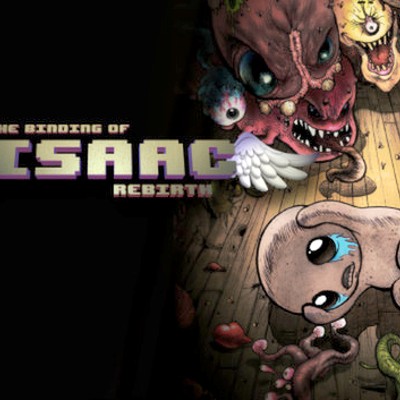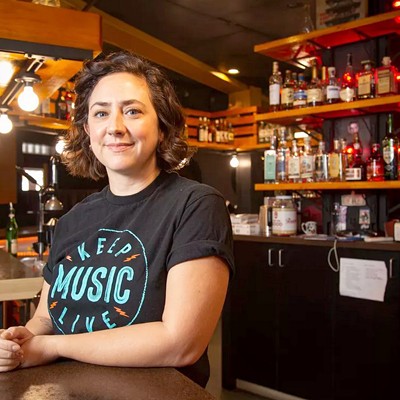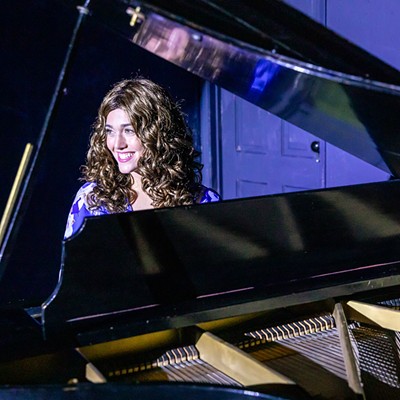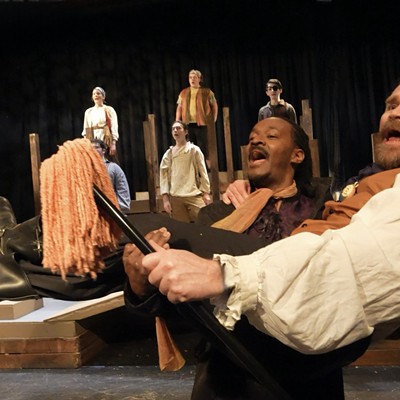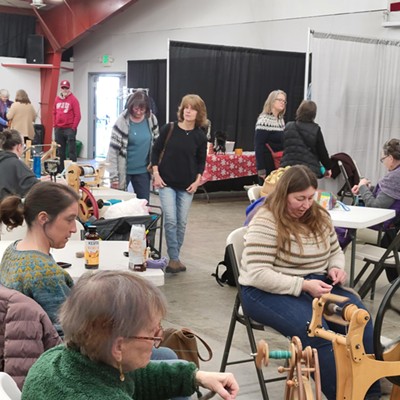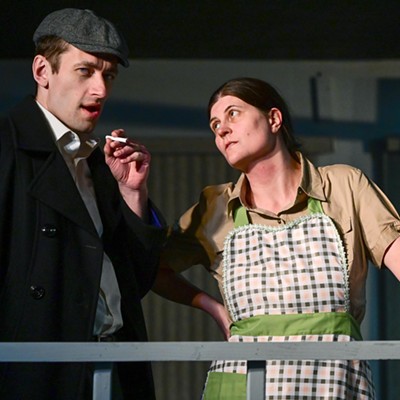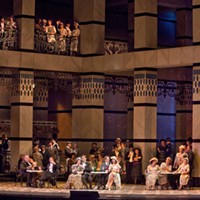To make an 18th century opera more relatable, the University of Idaho Opera will perform Mozart’s classic “The Marriage of Figaro” in business suits with scotch in hand.

“When I was thinking about what period we want to set it in -- Do we want to set it in an actual time? Do we want to update it? — I thought there’s a lot of gender conflicts and class conflicts as you find in a show like ‘Mad Men,’ ” said music and stage director Kyle Ferrill.
“Mad Men,” an AMC TV drama series is set in the 1960s, follows character Don Draper’s path at a New York City advertising agency. The plot of the show focuses on the business of the agency, as well as the changing moods, morals and social customs of the time.
To Ferrill, a handful of issues in “Figaro” are similar to those in the TV series.
“It’s the relationship of the women and the men — and the powerful women that are constantly outwitting the men, and being more respectable characters than the men are,” Ferrill said. “So many of the male characters in ‘Mad Men’ have no redeeming qualities, but we end up empathizing with them still.”
Just as audiences do with “Figaro’s” Count.
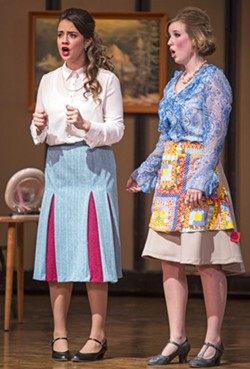
Graduate student Mike Heitmann is playing the Count for the second time this year, and said despite the title, the opera is not so much about the marriage of Figaro and Susanna — the Count’s servants — but about the characters' reactions to the Count’s behavior. Through an unhappy marriage to the Countess, and the desire to sleep with other women, the Count’s behavior worsens as he is undermined by his servants.
“The whole point is to trap the Count at some point in the opera and say you’re a liar,” Heitmann said. “For me, I think the Count is legitimately sorry for all the things he put the Countess through.”
Last time Heitmann played the Count, he traveled in time, too, performing the Count as Italian politician Silvio Berlusconi.
“We wanted it to have a recent event for the audience to connect with,” Heitmann said. “Because sometimes it is harder to connect with the older setting, but part of it is just money.”
With the economy of the arts, Heitmann said it’s difficult to pay for powdered wigs and corsets, as opposed to old suits found in the back of a closet or at The Storm Cellar in Moscow.
”It’d be tough to track down appropriate clothing for ‘60s women,” Ferrill said.
So, Ferrill hunted down textiles instructor Erika Iiams, who assigned her class to the challenge: Take a 18th century opera and throw the cast into clothes from the 1960s.
“Usually we just set them to industry standard,” Iiams said of the garments produced by the class. “It’s challenging for them to fit a body ... Real bodies have more curves.”
Students took actress measurements and designed dresses or skirts for seven chorus members and four main characters with found or donated fabric. Some of the fabric had floral print, and most of the dated fabric was thicker.
“Having costumes made and custom fit has been a really cool collaboration,” Ferrill said.
And instead of a set full of gold and velvet thrones, the 1960s set is more affordable, as well.
“We have a shower curtain. We have tape measuring, like you’d use in a construction site. We have a bottle of Cognac. We have other tools, like a hammer and crow bar,” Heitmann said. “For the Countess, who is my wife, when she’s fixing her hair in her room, the mirror is obviously modern, the makeup is modern, and our set itself, like the chair.”
The UI’s production of “The Marriage of Figaro” may be almost three hours, but it is shortened from the original.
“Aside from the traditional cuts, we’ve made other ones, and we’ve turned some of the stuff that is usually sung into spoken dialogue to speed it up,” Heitmann said.
For those who have never seen an opera, Heitmann and Ferrill said this is the one to see. For one thing, it will be sung in English.
“It’s a comedy. It’s got great music,” Heitmann said. “One of the things that’s really great about Mozart is the tempos that he puts in his music, they just keep moving forward and forward. And if it’s a slow song, it’s not very long ... The music itself is really easy to understand. And it’s something that everyone will be able to latch on to and enjoy.”
Treffry can be contacted at (208) 883-4640 or ltreffry@inland360.com. Follow her on Twitter @LindseyTreffry.
->if you go: WHAT: University of Idaho Opera performs “The Marriage of Figaro” WHEN: 7:30 p.m. Friday, 3 p.m. Sunday WHERE: Administration Building Auditorium, University of Idaho, Moscow COST: Tickets are $7 for adults and $5 for students with ID.

